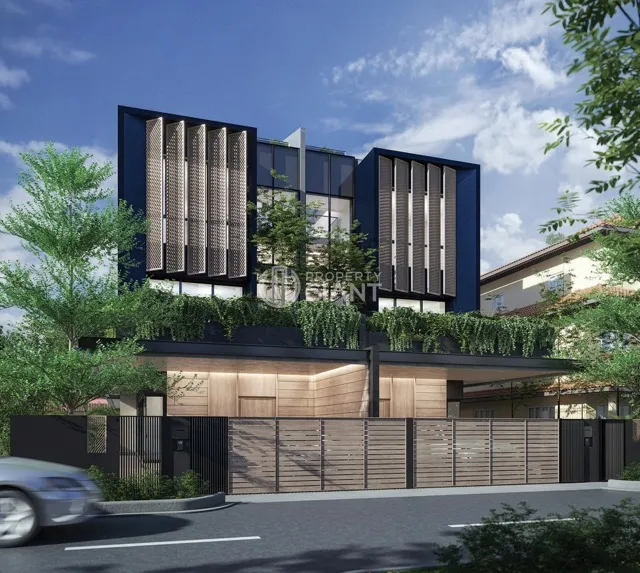Singapore's core inflation could hit a peak of around 4 per cent in the third quarter before moderating in late 2022, amid rising price pressures that have been intensified by the Russia-Ukraine war, the Monetary Authority of Singapore (MAS) said in its half-yearly macroeconomic review on Thursday (Apr 28).
This is assuming that there is some stabilisation in global commodity prices and supply constraints are partially resolved, said the central bank. Although labour shortages could ease, "elevated oil and agricultural commodity price levels are forecast to filter through to higher operating costs in Singapore over an extended period", it added.
"Together with rising unit labour costs stemming from the tight labour market, business costs will accumulate further and be passed through to consumer prices amid firm demand," said MAS.
Core inflation, which excludes accommodation and private transport, hit a decade high of 2.9 per cent last month, and is expected to remain significantly higher than the historical average of about 1.6 per cent. Headline inflation, according to the review, could peak at 5-6 per cent.
The rise in core inflation will be driven mainly by higher energy prices, said Denise Cheok, economist at Moody's Analytics.
"We currently forecast Brent crude prices to peak at US$105 per barrel near the middle of the year before gradually easing to US$88 per barrel towards the end of the year. Furthermore, food shortages caused by the Russia-Ukraine military crisis will likely persist even after the conflict ends," she said.
Maybank senior economist Chua Hak Bin said core inflation may not fall sharply even after peaking and may remain elevated.
"The introduction of the local qualifying salary and expansion of the progressive wage model in September could intensify wage costs and services inflation in the last quarter of the year and 2023," he said, adding that the upcoming GST hike would also increase price pressures and keep core inflation "well above 2 per cent".
Economists were mixed on whether the central bank would further tighten monetary policy in October, given the fluidity of the situation.
OCBC chief economist Selena Ling said while MAS has "frontloaded the monetary policy settings to combat inflation", she would not rule out another tightening depending on how the inflation trajectory pans out.
Global inflation is expected to reach 4 per cent this year, the highest since 2008, before easing to 2.2 per cent in 2023 as "supply challenges are addressed and major central banks withdraw policy accommodation".
Referring to the Russia-Ukraine war, MAS said: "Thus far, the main impact on the global economy has come through a sharp rise in global commodity prices, particularly in energy, fertilisers, nickel and grains, reflecting Russia and Ukraine’s significant role in the supply of those products."
In particular, price pressures have taken hold "more firmly" in the G3, which includes the eurozone, Japan and the United States, MAS said, noting that inflation averaged 6.8 per cent year on year in the first quarter, the highest since 1982.
Gross domestic product (GDP) in the G3 is projected to remain above trend at 3 per cent this year, slightly lower than the global figure at 3.9 per cent.
"The Russia-Ukraine conflict has dampened, but not derailed, global growth prospects for 2022," said MAS. The easing in growth should also help to contain inflation, it added.
Meanwhile, Singapore's economic growth in 2022 is likely to remain underpinned by "resilient domestic demand" with a broad easing of Covid-19 restrictions and border controls, even if its outlook has been dented by the war.
The central bank left its GDP forecast for the Republic unchanged at 3 per cent to 5 per cent in the absence of further disruptions caused by the war or a severe setback in the trajectory of the pandemic.
But the trade-related cluster, which led the recovery in 2021, is likely to see its contribution to GDP ease this year as it expands more slowly amid a weaker external environment, said MAS.
Instead, the recovery in the domestic-oriented and travel-related sectors is expected to gather pace now that Singapore has removed most of its Covid-19 restrictions.

"Domestic demand, particularly private consumption as well as public infrastructure investment, would be the main source of growth in 2022," said the authority.
OCBC's Ling said she is looking at more "broad-based" growth drivers this year, with the services sector stepping up and the manufacturing sector, particularly electronics and semiconductors, taking a "slight backseat after very strong growth" last year.
Still, Russia's invasion of Ukraine and its ensuing sanctions since late February have "cast a pall" over the economic outlook, MAS said.
"The shock is, in the first instance, supply-driven, initially manifesting as higher inflation at a time when global supply chain frictions arising from the pandemic have yet to be fully resolved. Supply-driven price shocks will dent real incomes and could lead to a pullback in aggregate demand," it said.
Although Singapore's direct trade exposure is minimal - imports and exports to Russia each accounted for less than 1 per cent in 2021 - Singapore could still be affected if its key export partners with significant exposures to Russia suffer income losses, as this would in turn reduce demand for the city-state's exports.
The top 5 countries and regions with significant demand value-added (VA) originating from Russia in US dollar (USD) terms were the Eurozone, China, US, Japan and United Kingdom.
"Singapore is more vulnerable to a fall in final demand in China, followed by the US and Eurozone, based on its VA contribution in USD terms to the final demand of these economies," said MAS.
"After scaling by these third countries' and regions’ exposure to Russia, Singapore’s VA in the final demand of these markets is just 0.55 per cent of Singapore’s nominal GDP in aggregate," it said.
But it noted that these calculations do not take into account the "confidence effects from a larger pullback in overall final demand, especially if the conflict escalates or becomes prolonged".
This is on top of other factors that have weakened consumer sentiment, such as rising inflation and general economic uncertainty. MAS noted that the University of Michigan's consumer sentiment index for the US was 65.7 in April, considerably lower than the 2019 average of 96. Likewise, consumer confidence in the Eurozone in March showed a large 10-point decline to -18.7, half a point smaller than the largest monthly drop ever recorded in April 2020.
From a production perspective, the Russia-Ukraine conflict indirectly affects Singapore through supply chain linkages when imported goods and services from its trading partners contain Russian components or inputs, said MAS.
The size of Russia’s VA embedded in Singapore’s total imports - the dollar value of components of Russia origin in imports - is around US$5.5 billion, accounting for 1.5 per cent of Singapore’s total imports and for 1.5 per cent of Singapore’s GDP.
The share of Russia’s embedded VA in Singapore’s exports is slightly smaller than that of imports, accounting for just 0.8 per cent of total export value, or 0.9 per cent of GDP. The bulk of this is in refined petroleum products and water transport services, which are heavily dependent on oil.
Compared to those industries, semiconductor manufacturing's reliance on oil or energy is smaller, so chip companies may see only limited near-term disruptions from the conflict, the central bank said.
"Major global chip companies such as Micron, UMC and GlobalFoundries, which have production presences in Singapore, have thus far indicated limited disruptions as they have stockpiled raw materials and diversified sourcing since Russia’s annexation of Crimea in 2014," said MAS.
It added that Singapore imports palladium mainly from the UK and the US, rather than Russia, although some of Singapore's palladium suppliers may be importing from Russia.
The global chip industry upturn, which began in early 2020, could last longer than past cycles and well into 2022, with the war triggering further hoarding.
Credit: Business Times


















